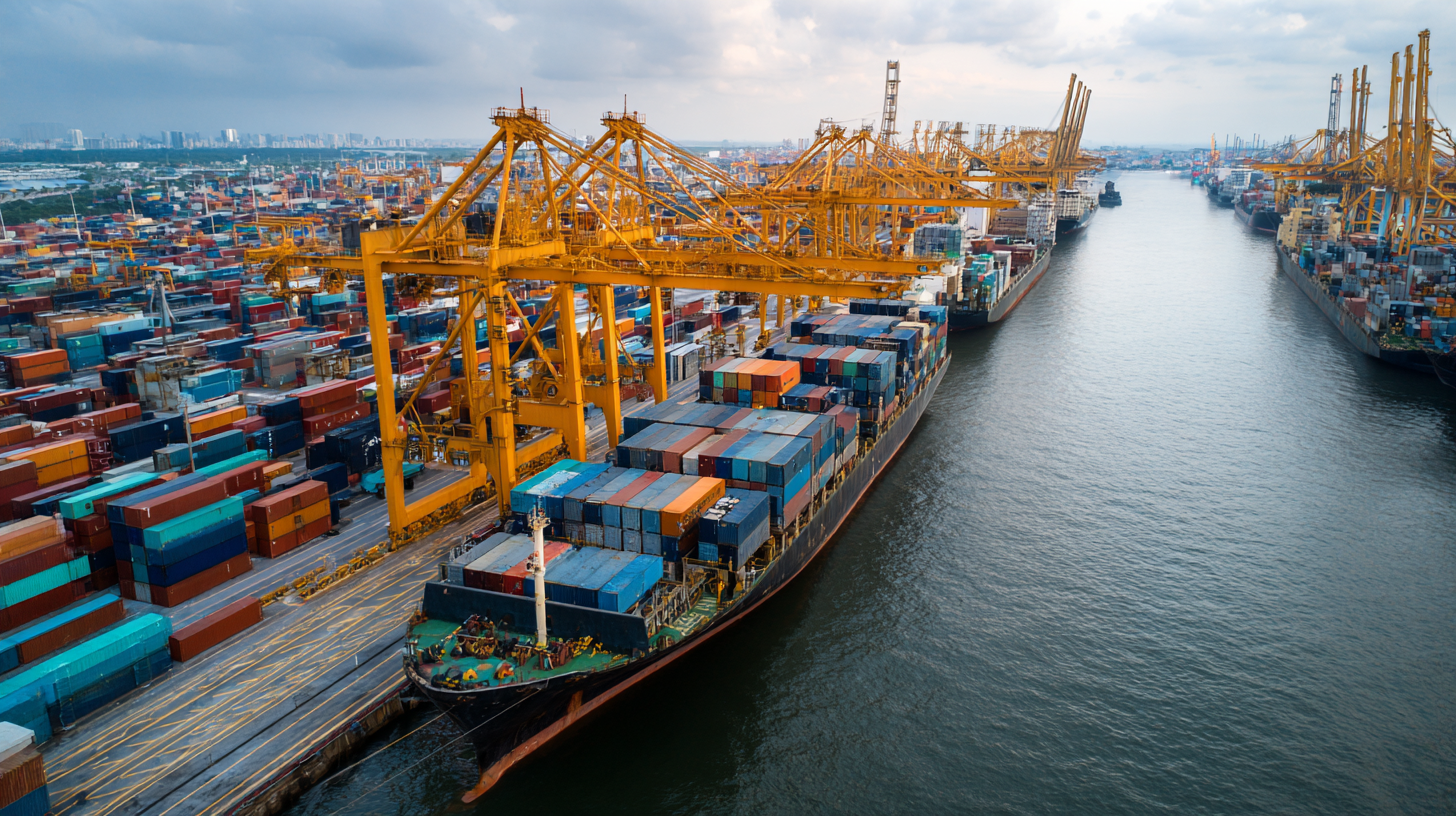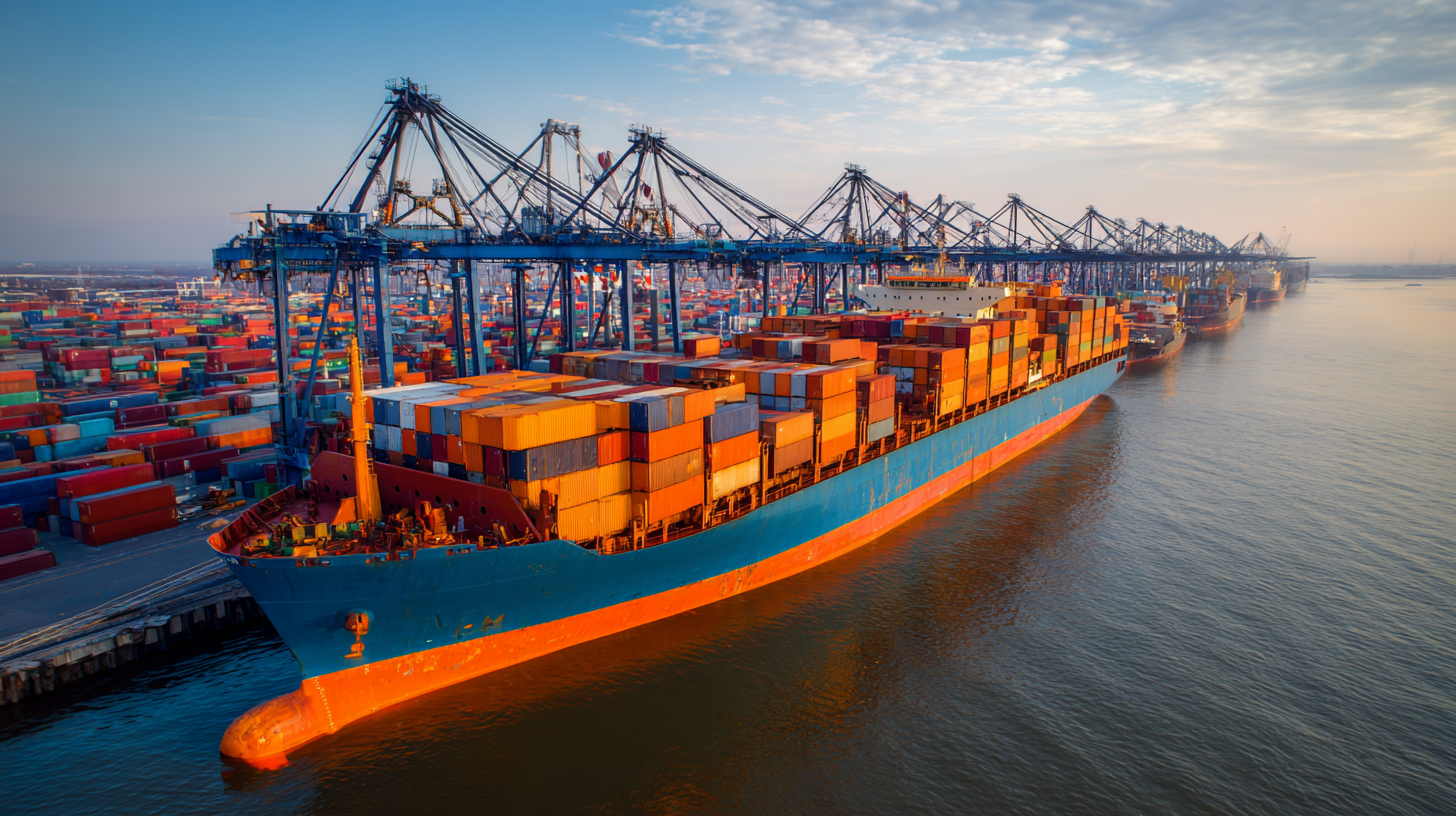Top 10 Benefits of Using Sea Freight for International Shipping Solutions
In the world of international shipping, the decision-making process can be overwhelming, particularly when choosing the most efficient transportation method. Sea freight emerges as a favored solution, offering numerous advantages for businesses aiming to navigate the complexities of global trade. According to John Smith, a renowned expert in logistics and supply chain management, “Sea freight not only ensures cost-effectiveness but also provides a reliable option for transporting large volumes of goods across vast distances.”

One of the standout benefits of utilizing sea freight is its capacity to accommodate a wide range of cargo sizes, making it an ideal choice for companies needing to ship bulk products. Furthermore, the environmental sustainability associated with sea freight has gained significance in recent years, as businesses strive to align their operations with eco-friendly practices. By understanding these benefits, companies can make informed decisions that enhance their supply chains and ultimately their bottom line.
As we delve into the top ten benefits of using sea freight for international shipping solutions, it becomes clear why this method remains a cornerstone in global logistics. From cost savings to capacity advantage, sea freight offers a robust framework for businesses aiming to thrive in an interconnected world.
Cost-Effectiveness of Sea Freight Compared to Other Shipping Methods
Sea freight is increasingly recognized for its cost-effectiveness compared to other shipping methods, especially in a world where port congestion and fluctuating container freight rates are commonplace. According to industry projections, the global sea freight forwarding market is expected to reach USD 123.60 billion by 2033, highlighting its critical role in facilitating international trade. As businesses grapple with the rising costs of air freight, sea freight remains an attractive option due to lower shipping rates and the ability to transport larger quantities of goods efficiently.
Moreover, sea freight not only offers significant savings but also supports sustainability objectives. It's well-documented that sea transportation is generally more fuel-efficient than air cargo, making it a more environmentally friendly choice. In addition, companies like DTFU Logistics have demonstrated how combining rail and sea freight can further enhance cost savings and operational efficiency. This multimodal approach allows businesses to optimize their logistics strategies, balancing cost, speed, and safety, which is crucial for competing effectively in today’s global market.
Top 10 Benefits of Using Sea Freight for International Shipping Solutions
Environmental Sustainability of Ocean Transportation
The environmental sustainability of ocean transportation is a crucial benefit of using sea freight for international shipping. As global awareness of environmental issues grows, businesses are increasingly seeking ways to minimize their carbon footprints. Sea freight is one of the most efficient options available, emitting significantly lower greenhouse gases per ton of cargo compared to air transport. This mode of transportation leverages the natural buoyancy of water, allowing ships to move massive quantities of goods while consuming less fuel relative to the weight carried.
Tips for enhancing the environmental impact of your sea freight operations include opting for eco-friendly shipping partners that prioritize sustainable practices, such as using energy-efficient vessels and reducing waste during transport. Additionally, consider consolidating shipments into fewer containers to maximize space and minimize the number of trips. This not only reduces emissions but can also lower shipping costs.
Engaging in responsible sourcing and selecting local suppliers can further enhance sustainability in your shipping strategy. By reducing the distance goods travel, you not only lower the amount of fuel consumed but also support local economies. Embracing these practices not only positions your business as an environmentally conscious entity but also caters to a growing market of consumers who value sustainability.
Capacity and Volume Advantages of Shipping by Sea
Shipping by sea offers remarkable capacity and volume advantages, making it a preferred choice for international shipping solutions. Unlike air freight, which is limited by both weight and size, sea freight allows for the transport of substantial quantities of goods. This capability is particularly beneficial for businesses that need to move large cargo, such as machinery, vehicles, or bulk commodities. The ability to stack containers efficiently on large vessels maximizes space and minimizes costs, providing a cost-effective solution for high-volume shipments.
When considering sea freight, it’s essential to plan ahead. One tip is to consolidate shipments whenever possible. By combining smaller shipments into one larger load, businesses can take full advantage of container capacity, reducing overall shipping expenses. Additionally, understanding port schedules and transit times can help companies better manage inventory and streamline logistics. As a result, shipping by sea not only supports larger quantities but also promotes operational efficiency, leading to improved service delivery and customer satisfaction.

Reliability and Safety in Sea Freight Logistics
Sea freight logistics offer remarkable reliability and safety, making it an ideal choice for international shipping. One of the primary benefits of using sea freight is its ability to handle large volumes of cargo with minimal damage. Shipping containers are designed to withstand harsh environmental conditions, ensuring that goods arrive at their destination intact. Additionally, sea freight providers adhere to strict safety regulations, further protecting cargo throughout the journey. This emphasis on safety translates to peace of mind for shippers and businesses alike, knowing their shipments are in capable hands.
Another aspect contributing to the reliability of sea freight is the robust infrastructure that supports it. Ports around the world are well-equipped to facilitate smooth loading and unloading processes, reducing the risk of delays. Advanced tracking systems allow shippers to monitor their cargo in real-time, providing transparency and enhancing trust in the shipping process. This reliability is essential for businesses that depend on timely deliveries to meet customer demands and maintain operational efficiency. Overall, the safety and dependability of sea freight logistics make it a preferred choice for international shipping needs.
Top 10 Benefits of Using Sea Freight for International Shipping Solutions - Reliability and Safety in Sea Freight Logistics
| Benefit | Description | Estimated Cost Savings (%) | Transit Time (Days) |
|---|---|---|---|
| Cost-Effectiveness | Sea freight is typically more economical compared to air freight, especially for large shipments. | 30-70% | 20-40 |
| Greater Capacity | Sea vessels can carry a significantly larger volume of goods. | N/A | 20-40 |
| Environmental Sustainability | Lower carbon emissions per ton-mile compared to air transport. | N/A | 20-40 |
| Safety and Security | Reduced risk of damage due to slower transit times and careful handling. | N/A | 20-40 |
| Flexibility in Cargo Types | Suitable for a wide range of goods, including bulk and heavy items. | N/A | 20-40 |
| Global Reach | Ability to access international markets via extensive shipping routes. | N/A | 20-40 |
| Less Packaging Required | Goods can often be shipped with less packaging due to reduced handling. | N/A | 20-40 |
| Regulatory Compliance | Established practices help meet international shipping regulations. | N/A | 20-40 |
| Less Risk of Theft | Shipping cargo via sea typically has lower theft rates compared to air freight. | N/A | 20-40 |
| Insurance Benefits | Lower insurance costs due to the nature of sea freight. | 10-20% | 20-40 |
Flexibility in Shipping Schedules and Routes with Sea Freight
Flexibility in shipping schedules and routes has become increasingly vital in the dynamic landscape of the global logistics market. As the sea freight forwarding industry is projected to grow from $75.56 billion in 2024 to $123.60 billion in the coming years, shippers must adapt to uncertainties that affect both schedule reliability and freight rates. Events such as the ongoing conflicts in the Red Sea and the implications of trade wars have led to fluctuating container shipping rates, prompting logistics providers to emphasize short-term flexibility in operations. This adaptability allows companies to navigate disruptions more effectively, ensuring timely deliveries while optimizing transportation costs.
 Furthermore, the recent expansion of services on various sea routes reflects the industry's responsiveness to rising freight volumes. For instance, a significant increase in capacity on the North Sea routes caters to heightened demand, showcasing how sea freight solutions can efficiently adapt to market changes. As businesses explore new direct routes, like those established between China and Peru, they gain access to diverse shipping options, enhancing their supply chain resilience. Ultimately, leveraging the flexibility of sea freight solutions enables shippers to maintain operational efficiency and competitiveness in an ever-evolving market.
Furthermore, the recent expansion of services on various sea routes reflects the industry's responsiveness to rising freight volumes. For instance, a significant increase in capacity on the North Sea routes caters to heightened demand, showcasing how sea freight solutions can efficiently adapt to market changes. As businesses explore new direct routes, like those established between China and Peru, they gain access to diverse shipping options, enhancing their supply chain resilience. Ultimately, leveraging the flexibility of sea freight solutions enables shippers to maintain operational efficiency and competitiveness in an ever-evolving market.
Related Posts
-

Transform Your Space: Innovative Uses for Storage Shipping Containers in Urban Living
-

Unlocking the Potential of Shipping Containers: Sustainable Solutions for Modern Logistics
-

The Rise of Construction Containers Revolutionizing the Building Industry Amidst Sustainability Demands
-

Exploring the Benefits of Container Trailers for Efficient Transportation Solutions
-

The Ultimate Guide to Choosing the Right Movers Containers for Your Next Move
-

Exploring Innovative Uses for Construction Containers in Modern Architecture
